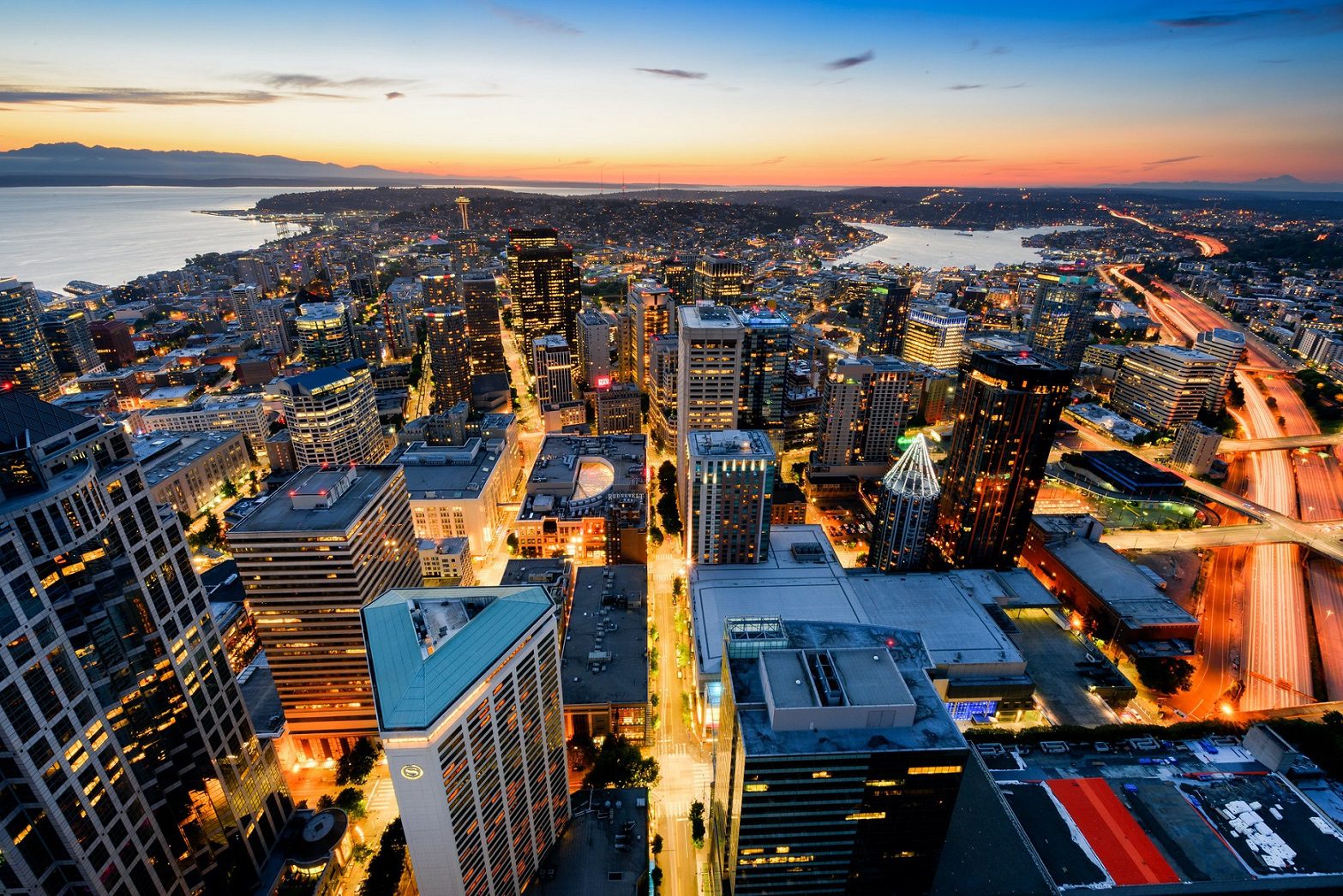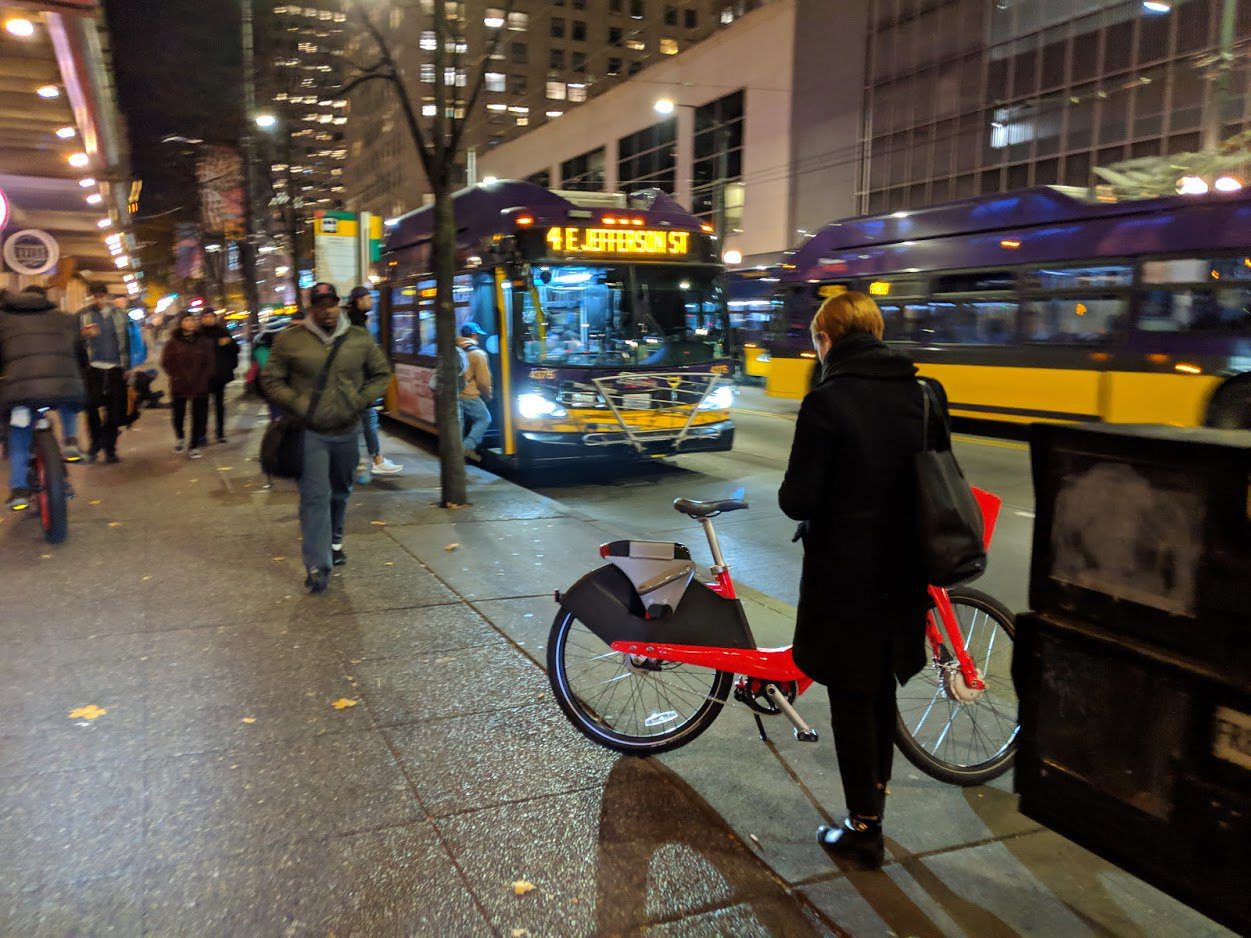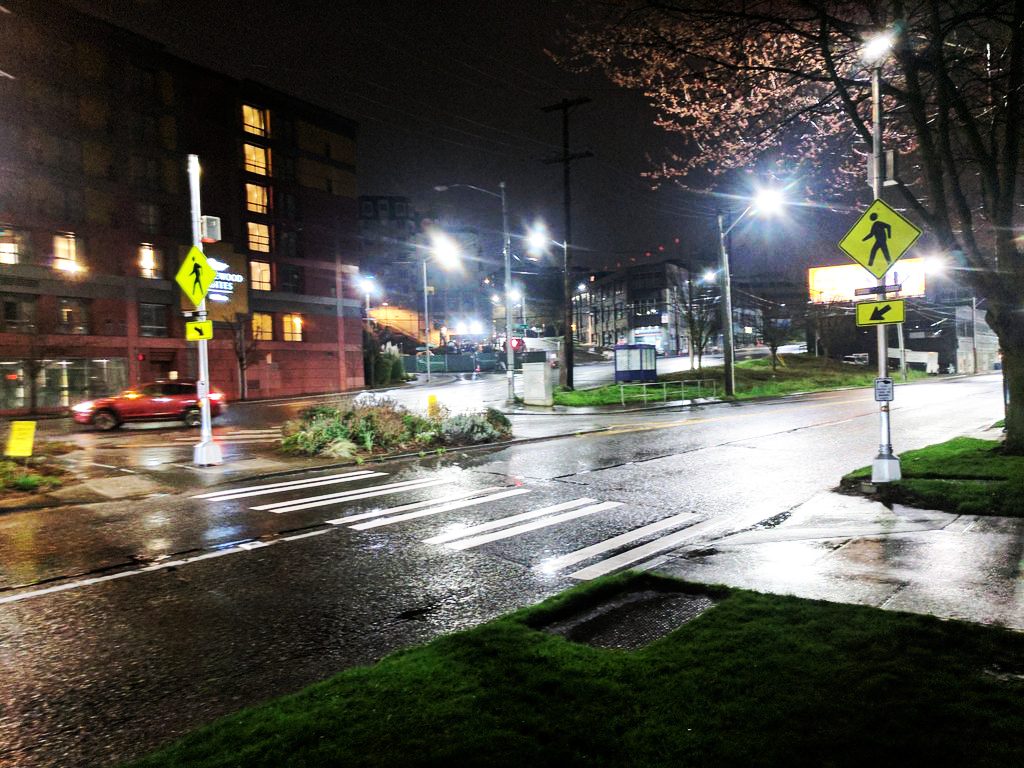 Downtown Seattle at sunset. Photo credit: SDOT
Downtown Seattle at sunset. Photo credit: SDOT This coming Sunday, November 6 is the end of daylight saving time, which brings us an extra hour of sleep! However, shorter days ahead mean more of us are commuting during times when visibility is especially challenging.
Traveling in the dark means drivers will need to take steps to avoid drowsy driving and pay extra attention to their headlights and field of vision.
The late fall and winter period has historically been the most dangerous time of the year for people who walk, bike, or roll. However, there are some things people can do to help protect themselves.
Here are some safety tips for everyone traveling in the darker winter months ahead.
See and be seen.
While people driving need to pay extra attention, people walking and biking can help them out by making sure they are visible. The best way to do this is to wear reflectors or bright-colored clothing.
If you’re bicycling or walking and need a light, let us know! We have lights you can attach to your bike, bag, wheelchair, stroller, or whatever you’d like.
Don’t assume that a driver or bicyclist sees you. When crossing the street, be extra aware of drivers who are driving toward the sunrise or sunset, as they will have a harder time seeing you due to glare.

Pay attention.
If you’re driving, pay close attention and keep an eye out for people crossing the street (remember, every intersection is a legal crossing).
For people who are walking, biking, or rolling, always cross at an intersection. Lighting is often better there, and at major intersections there are typically pedestrian signals to follow and crosswalks to help you be seen.
Also, put down your phone. You’ve probably heard, it’s against the law to drive with a handheld phone, or to text while driving. Even if you’re stopped at a light. It’s a good idea to put your phone down while you cross the street too. Take a moment to make sure it’s safe to cross and make eye contact with drivers. This goes back to that see and be seen thing we were talking about.

Slow down.
Speed is a critical factor in crashes. Follow posted speed limits. Slow down around bicyclists and pedestrians and always give them extra space when passing. Increase the recommended safe distances to allow three or more seconds between your vehicle and bicyclists. The more space you have, the more time you have to react.
When visibility is lower (think darkness and rain), it’s especially important to give yourself space and time to get where you’re going. Don’t rush. These daily actions can really add up and help Seattle reach our Vision Zero goal of ending traffic deaths and serious injuries on city streets by 2030.
One more tip and a reminder! Please make sure you do your part and sweep up leaves off the sidewalk (as wet leaves can be slippery) and away from storm drains to prevent flooding.
It’s up to all of us to do our part to stay alert and be careful when we travel. Thank you for keeping our streets safe!